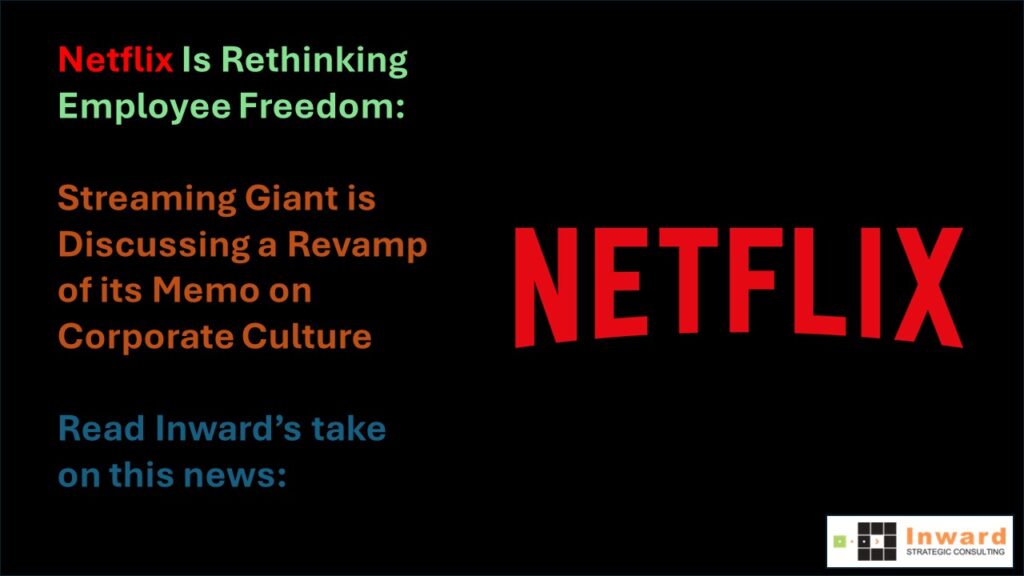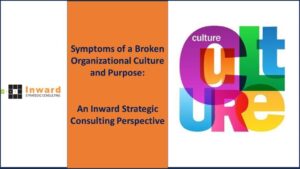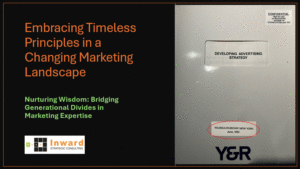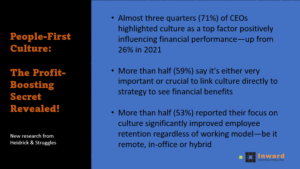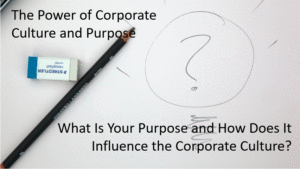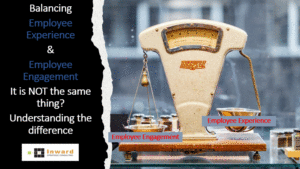Analyzing Netflix’s Culture Shift: What It Means for Businesses
Will Netflix’s Culture Shift Redefine Corporate Success?
Streaming Giant is Discussing a Revamp of its Memo on Corporate Culture
In the ever-evolving landscape of corporate culture, Netflix has always stood out as a leader in innovation and disruption. For years, the streaming giant has been synonymous with its groundbreaking approach to employee freedom and responsibility. However, recent discussions within the company hint at a seismic shift in its cultural ethos, as reported in a recent Wall Street Journal article by Jessica Toonkel on March 16, 2024.
At Inward’s Strategic Consulting, we view these potential changes at Netflix through a lens of organizational dynamics, stakeholder alignment, and cultural evolution. Change happens as an organization grows. As companies grasp and face new challenges, it’s imperative to reassess and adapt cultural norms to ensure continued success and alignment with strategic objectives.
Netflix’s long-standing mantra of “freedom and responsibility” has been foundational to its rapid growth and innovation. Trusting employees to make autonomous decisions has empowered individuals to act swiftly and decisively, driving the company’s success in a dynamic industry.
Yet, as Netflix expands its global footprint and navigates complex business changes and landscapes reorientation, the need for cultural recalibration becomes apparent. The proposed removal of the “freedom and responsibility” section from the corporate culture memo signals a shift towards a more nuanced approach to employee empowerment.
Instead of solely focusing on freedom, the company aims to instill a culture of ownership and accountability. This strategic pivot reflects Netflix’s maturation as an organization, acknowledging the importance of balance between autonomy and responsibility. Ownership mindsets make employees perform their jobs differently with greater passion and drive. Their responsibilities are not just tasks.
Examples from other companies offer valuable insights into the potential consequences of such cultural shifts. Google, once known for its unconventional workplace culture, has undergone significant transformation in recent years. As the tech giant faced regulatory scrutiny and internal challenges, it reevaluated its approach to employee autonomy, emphasizing accountability and ethical decision-making.
Similarly, Amazon, renowned for its demanding work culture, has faced criticism and scrutiny over its treatment of employees. In response, the company has implemented changes to prioritize employee well-being and foster a more inclusive and supportive environment.
Netflix’s proposed emphasis on creativity and creative freedom aligns with broader industry trends. In today’s competitive landscape, companies must nurture innovation and empower employees to think outside the box. By fostering a culture that encourages creativity and ownership, Netflix positions itself to continue leading the way in content creation and storytelling.
However, cultural changes are not without challenges. Netflix executives have acknowledged concerns raised by employees regarding the proposed revisions. Balancing the need for structure with the desire for autonomy requires careful deliberation and stakeholder engagement.
As co-founder Reed Hastings humorously remarked, culture is not static but rather a living organism that requires constant review and adaptation. By soliciting feedback and remaining open to change, Netflix demonstrates its commitment to fostering a culture that aligns with its core values and strategic objectives.
Cultural transformation requires more than just rewriting memos and implementing new policies. It necessitates a comprehensive approach that engages employees at all levels, fosters open dialogue, and promotes a shared sense of purpose. Netflix’s commitment to soliciting feedback from its workforce underscores its dedication to inclusivity and transparency, key pillars of effective organizational culture.
Moreover, Netflix’s willingness to revisit its cultural norms in light of employee feedback exemplifies a culture of continuous improvement and adaptability. As the company evolves, it must remain agile and responsive to changing internal and external dynamics, ensuring that its cultural values remain relevant and impactful.
Inward’s Strategic Consulting has observed similar cultural shifts in other organizations undergoing periods of transformation. Companies such as Apple and Microsoft have undergone profound cultural overhauls under new leadership, revitalizing their respective brands and driving renewed innovation.
Apple’s transition from a product-centric to a customer-centric culture under CEO Tim Cook has propelled the company to new heights of customer satisfaction and loyalty. By prioritizing user experience and inclusivity, Apple has cemented its position as a leader in the technology industry.
Likewise, Microsoft’s cultural transformation under CEO Satya Nadella has been characterized by a shift towards empathy, collaboration, and inclusion. By fostering a growth mindset and embracing diversity, Microsoft has reinvigorated its workforce and unleashed a wave of creativity and innovation.
In conclusion, Netflix’s rethinking of employee freedom represents a strategic recalibration aimed at fostering a culture of ownership, accountability, and creativity. From an Inward’s Strategic Consulting perspective, we commend Netflix for its proactive approach to cultural evolution and its commitment to driving sustainable growth and innovation. By embracing a culture of ownership, accountability, and creativity, Netflix positions itself for continued success in an increasingly competitive market.
Through a strategic consulting lens, we recognize the importance of cultural alignment with organizational goals and applaud Netflix’s willingness to evolve in pursuit of excellence. As the streaming giant navigates this cultural transition, we remain optimistic about its future trajectory and its ability to redefine the entertainment landscape.


